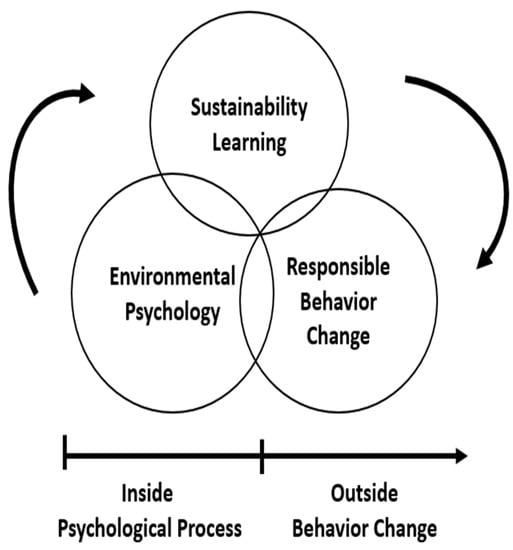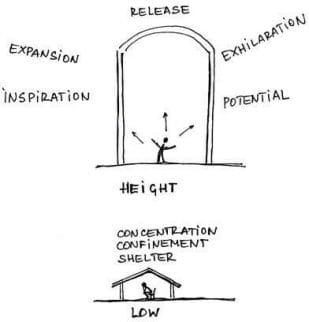Introduction
The relationship between humans and their environments is both profound and complex. Environmental psychology seeks to understand how the physical world influences human behavior, cognition, and well-being, and how individuals, in turn, shape their environments. As ecological and urban challenges intensify globally, the insights from environmental psychology are crucial for fostering sustainable and health-promoting settings.
Read More- Pillars of Sustainability
Definition of Environmental Psychology
Environmental psychology is defined as the scientific study of the interactions between individuals and their physical environments, which include natural landscapes, built spaces, and social settings.

Psychology and Environment
According to Proshansky (1967), environmental psychology is “the attempt to establish empirical and theoretical relationships between behavior and experiences of a person and his built environment.” This early definition underscored the influence of architecture and urban planning on human behavior.
Further elaborations by other scholars have broadened the field’s scope-
- Stokols and Altman (1987) described environmental psychology as “the study of human behavior and well-being in relation to the socio-physical environment.”
- Steg et al. (2019) highlighted that environmental psychology examines both the impact of environments on individuals and the reciprocal influence of individuals on environmental quality.
- Gifford et al. (2010) defined it as “a study of transactions between individuals and their physical settings,” emphasizing mutual influence and change.
Historical Evolution of Environmental Psychology
Some important historical landmarks in the history of environmental psychology include-
Early Foundations
Environmental psychology has roots in the works of early psychologists who recognized the significance of context in behavior. Egon Brunswik emphasized giving equal weight to environmental features in psychological analysis, advocating for an ecological perspective (Brunswik, 1956). Kurt Lewin contributed the famous equation B = f(P, E), where behavior (B) is a function of the person (P) and the environment (E) (Lewin, 1936). He also pioneered social action research, a methodology grounded in solving real-world problems.

Lewin’s Field Theory
Gestalt psychology, particularly the work of Koffka, influenced early environmental psychology by distinguishing between the geographical (objective) and behavioral (perceived) environments—highlighting the importance of subjective environmental perception (Koffka, 1935).
The term “environmental psychology” was introduced by Hellpach (1911), who examined how elements like light, color, and natural phenomena influenced psychological states.
Architectural Psychology and Post-War Development
In the 1940s–1950s, studies began focusing on how physical settings affect behavior, especially in workspaces and homes. Examples include research on home lighting (Chapman & Thomas, 1944) and children’s behavior in natural settings (Barker & Wright, 1955). These studies were often grouped under architectural psychology, which concentrated on human interactions with constructed environments (Canter, 1970).

Example of Environmental Psychology
The Rise of “Green Psychology”
The environmental movement in the 1960s–70s expanded the field’s scope to include sustainability, ecological conservation, and pro-environmental behavior. Researchers studied urban noise (Griffiths & Langdon, 1968), air pollution (De Groot, 1967), and risk perceptions of environmental hazards (Fischhoff et al., 1978), thus paving the way for contemporary green psychology.
Scope of Environmental Psychology
Environmental psychology covers a vast range of topics that integrate multiple disciplines such as psychology, architecture, urban planning, sociology, and environmental science. Its scope includes, but is not limited to:
- Environmental Perception and Cognition- Studies investigate how people perceive and mentally represent physical spaces. This includes the formation of cognitive maps, spatial memory, and the influence of design elements on navigation and comfort (Kaplan & Kaplan, 1989).
- Environmental Stressors- Environmental psychology explores how noise, crowding, pollution, and extreme temperatures act as stressors that impact psychological and physiological health (Evans & Cohen, 2004). Chronic exposure to such stressors has been linked with impaired immune responses and increased mental health issues (Stansfeld & Matheson, 2003).
- Place Attachment and Identity- People often form emotional bonds with specific places, which shape their identity and influence behavior. This phenomenon, known as place attachment, is central to understanding residential satisfaction and environmental stewardship (Proshansky, Fabian, & Kaminoff, 1983).
- Pro-Environmental Behavior- One of the field’s critical contributions is promoting sustainable behavior. This includes examining environmental attitudes, values, and interventions that encourage behaviors like recycling, energy conservation, and ecological citizenship (Steg & Vlek, 2009).
- Design of Built Environments- Environmental psychologists collaborate with architects and urban planners to design spaces that enhance well-being. This includes considerations of personal space, privacy, lighting, acoustics, and accessibility (Gifford, 2007).
Characteristics of Environmental Psychology
According to Bell et al. (2001), environmental psychology is distinguished by-
- Its focus on the environment-behavior unit.
- The absence of strict boundaries between theoretical and applied research.
- A multidisciplinary nature drawing from geography, sociology, and architecture.
- International relevance with applications worldwide.
- Eclectic research methods, including qualitative, quantitative, and mixed methodologies.
Conclusion
Environmental psychology is a vital field that bridges psychological science and environmental design. By exploring the multifaceted interactions between people and their surroundings, it offers insights that inform urban planning, environmental policy, mental health strategies, and sustainability initiatives. In a world facing ecological and social challenges, environmental psychology provides essential tools for creating spaces that support both human flourishing and environmental stewardship.
References
Barker, R. G., & Wright, H. F. (1955). Midwestern town: A study of local life. Appleton-Century-Crofts.
Bell, P. A., Greene, T. C., Fisher, J. D., & Baum, A. (2001). Environmental psychology (5th ed.). Harcourt College Publishers.
Brunswik, E. (1956). Perception and the representative design of psychological experiments. University of California Press.
Canter, D. (1970). The psychology of place. Architectural Press.
Gifford, R. (2007). Environmental psychology: Principles and practice (4th ed.). Optimal Books.
Gifford, R., Steg, L., & Reser, J. P. (2010). Environmental psychology: People and their physical settings. Wiley.
Hellpach, W. (1911). Geopsyche: The human mind and the physical environment. Leipzig: Engelmann.
Kaplan, R., & Kaplan, S. (1989). The experience of nature: A psychological perspective. Cambridge University Press.
Koffka, K. (1935). Principles of Gestalt psychology. Harcourt, Brace.
Lewin, K. (1936). Principles of topological psychology. McGraw-Hill.
Proshansky, H. M. (1967). The field of environmental psychology: Proposals for its development. American Psychologist, 22(7), 395–406.
Proshansky, H. M., Fabian, A. K., & Kaminoff, R. (1983). Place identity: Physical world socialization of the self. Journal of Environmental Psychology, 3(1), 57–83.
Stansfeld, S. A., & Matheson, M. P. (2003). Noise pollution: Non-auditory effects on health. British Medical Bulletin, 68(1), 243–257.
Steg, L., & Vlek, C. (2009). Encouraging pro-environmental behaviour: An integrative review and research agenda. Journal of Environmental Psychology, 29(3), 309–317.
Steg, L., van den Berg, A. E., & de Groot, J. I. M. (2019). Environmental psychology: An introduction (2nd ed.). Wiley-Blackwell.
Stokols, D., & Altman, I. (1987). Handbook of environmental psychology. Wiley.
Subscribe to Careershodh
Get the latest updates and insights.
Join 16,512 other subscribers!
Niwlikar, B. A. (2025, April 21). Environmental Psychology: 2 Important Definitions, 5 Scope, and 5 Characteristics. Careershodh. https://www.careershodh.com/environmental-psychology-definition/
